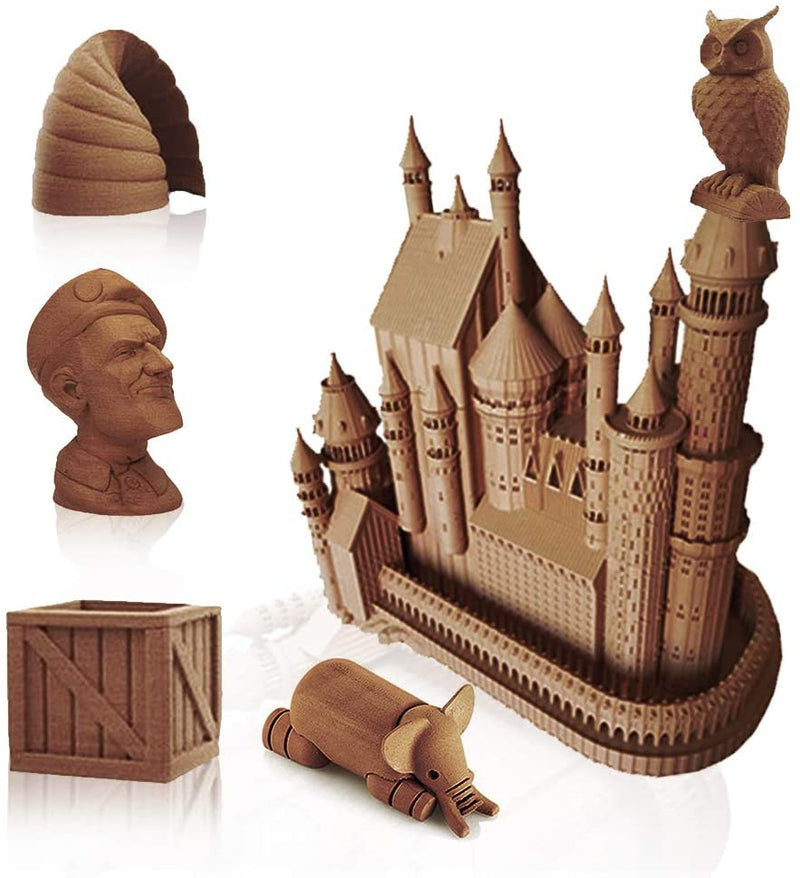Unlock the Secret to Stunning 3D Prints with This Essential Wood Filament!
In the ever-evolving world of 3D printing, wood filament has carved out a unique niche that is capturing the attention of hobbyists and professionals alike. This innovative material combines the ease of traditional filaments with the beauty and warmth of natural wood, creating prints that are not only visually appealing but also versatile in application. Whether you're crafting decorative items, functional tools, or intricate art pieces, wood filament offers a distinctive finish that sets your projects apart. As we delve into the essentials of purchasing wood filament, we will explore its benefits, key considerations, and practical tips to ensure your next project achieves remarkable results.

What is Wood Filament?
Wood filament is a unique composite material used in 3D printing, consisting primarily of polylactic acid (PLA) blended with fine wood fibers. This combination not only gives the filament its characteristic wood-like appearance but also retains the ease of printing associated with PLA. Unlike traditional filaments, wood filament can produce prints that have a tactile, natural feel, resembling actual wood grain. The incorporation of wood fibers influences the printing process, requiring specific settings to achieve optimal results. Additionally, wood filament is available in various shades and finishes, allowing for creative expression in your projects. The interplay of the PLA and wood fibers creates a filament that is biodegradable and eco-friendly, aligning well with sustainable practices in the 3D printing community.
Benefits of Using Wood Filament
Choosing wood filament for your 3D printing projects comes with a myriad of advantages. Firstly, its aesthetic appeal is undeniable; the finished products exhibit a rich, wood-like appearance that adds a touch of elegance, making them ideal for decorative pieces and gifts. Beyond aesthetics, wood filament is generally user-friendly, offering good adhesion to the print bed and minimal warping during the printing process. This ease of use makes it an excellent choice for both beginners and seasoned printers. Moreover, wood filament is eco-friendly, as it utilizes biodegradable materials, contributing to a more sustainable approach to 3D printing. Applications for wood filament are diverse, ranging from art and décor to functional items like customized tools and household goods. The unique blend of functionality and appearance makes wood filament a favorite among creators looking to push the boundaries of their 3D designs.
Considerations When Purchasing Wood Filament
When it comes to purchasing wood filament, several key factors must be taken into account to ensure that you select the best option for your projects. Printability is a crucial consideration; verify that the filament is compatible with your specific 3D printer model. Different printers may require different settings, so understanding your equipment is essential. Additionally, color options and texture variations can greatly impact the final appearance of your prints, so consider the desired finish before making a choice. Take the time to read reviews and seek recommendations from the 3D printing community to gauge user experiences with specific filaments. This insight can help you avoid potential pitfalls and choose a product that meets your expectations.
Quality and Sourcing
Identifying high-quality wood filament is vital for achieving superior results in your 3D prints. Look for manufacturers that provide clear information about their materials and production processes. Certifications can serve as indicators of quality, as they often reflect adherence to industry standards. Additionally, reputable sources typically have customer reviews available, which can provide valuable insight into the filament’s performance and reliability. Engaging with the 3D printing community through forums and social media can also help you discover trusted suppliers and high-quality options that others have successfully used.
Tips for 3D Printing with Wood Filament
Successfully printing with wood filament requires some adjustments to your typical printing settings. It’s recommended to use a slightly higher nozzle temperature than standard PLA, typically around 190°C to 220°C, to ensure proper melting of the wood fibers. Adjusting the print speed is also crucial; slower speeds can lead to better detail and finish quality. Post-processing can enhance the final product significantly. Techniques such as sanding can help smooth out rough edges, while staining can deepen the wood-like appearance and add richness to your prints. Experimenting with these settings and finishes can yield stunning results that truly showcase the beauty of wood filament.
Maximizing Your Creative Potential with Wood Filament
In summary, wood filament is a remarkable material that opens up a world of creative possibilities for 3D printing enthusiasts. Its unique blend of aesthetic appeal, ease of use, and eco-friendliness makes it an ideal choice for a variety of projects. As you consider purchasing wood filament, keep in mind the key factors discussed, including printability, color options, and sourcing quality materials. With the right approach and a willingness to experiment, wood filament can elevate your 3D printing endeavors to new heights. So go ahead, explore the potential of wood filament in your next project, and let your creativity flourish!






